Ponagar Cham Tower Nha Trang: A Glimpse into the Remarkable Architecture of Ancient Cham People
Ponagar Cham Tower in Nha Trang exudes a rugged beauty and prominence, making it a top choice for many travelers. This temple stands as a symbol of the spiritual and cultural world of the ancient people of Nha Trang. When you visit, you’re not just exploring a historical site but delving into the profound tapestry of beliefs and traditions that shaped the coastal city’s spiritual identity. Today, let’s journey with Vietnampeace to uncover the allure and fascinating stories surrounding Ponagar Cham Tower in Nha Trang.
Ponagar Cham Tower Nha Trang – Architectural Icon of the Champa People
Address: 61 Hai Thang Tu, Vinh Phuoc, Nha Trang City, Khanh Hoa.
Opening hours: 8:00 AM – 6:00 PM.
Phone number: 0899 789 815.
Ticket price: 30,000 VND/person.
Ponagar Cham Tower in Nha Trang is an ensemble of several towers the ancient Champa people built. Also known as Yang Po Inư Nagar, the towers are believed to have been constructed during the Hindu era, when the Champa kingdom flourished and followed a matriarchal system. Accordingly, Ponagar Cham Tower was built in the image of Queen Po Ina Nagar.
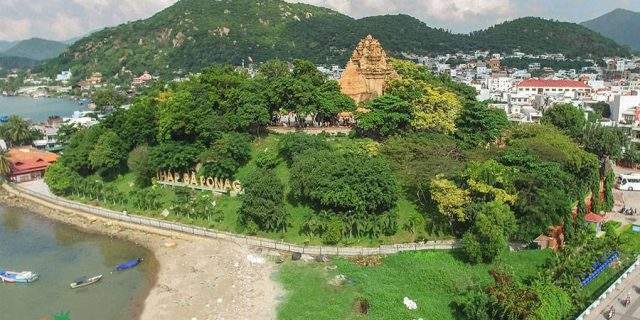
Ponagar Tower in Nha Trang (Photo ST)
According to the ancient Champa people, Queen Po Ina Nagar is a goddess who created the Earth from clouds and sea foam. She is a deity bringing peace, protecting them from storms, and ensuring abundant harvests and prosperity.
Perched on a small hill beside the Cai River, Ponagar Cham Tower rises about 10 – 12 meters above sea level, close to the city center of Nha Trang. Thanks to its unique architectural style and strategic location, Ponagar Cham Tower attracts countless visitors daily, especially during the festive seasons and the beginning of the year.
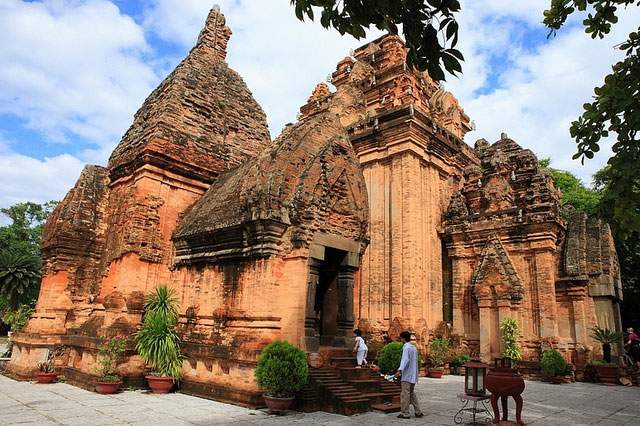
Buildings up to now no longer remain intact (Photo ST)
Guide on How to Get to Ponagar Cham Tower Nha Trang
Ponagar Cham Tower in Nha Trang is close to the city center, approximately 3 km away. You can choose to travel by motorbike or taxi for convenience and cost-effectiveness.
The nearest and most straightforward route is to first head towards Tran Phu Street, continue straight to Tran Phu Bridge, and take a left onto Thap Ba Street once you pass the bridge. Continue to the end of Thap Ba Street, where you’ll see a large sign for Ponagar Cham Tower Nha Trang—you’ve arrived.
Explore the Architectural Beauty of Ponagar Cham Tower Nha Trang
Ponagar Cham Tower Nha Trang is divided into three main areas to explore and admire. Each area has unique and fascinating architectural features that will leave a lasting impression.
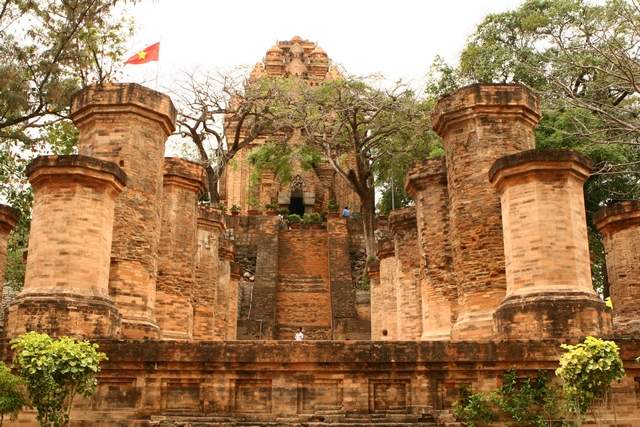
Large octagonal columns are found in Thap Ba (Photo ST)
Gateway Area
Built-in the grand image of a majestic gate, it harmonizes with the overall architecture of the Ponagar Cham Tower complex. Although not entirely intact due to time, this area still bears architectural traces of the past, with columns and stone steps leading to the forecourt.
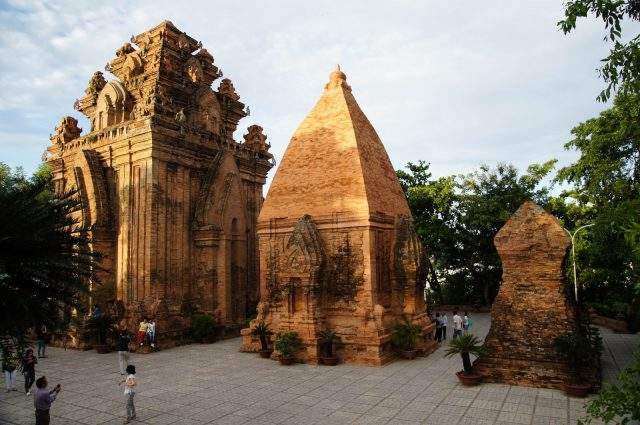
The main floor consists of the giant tower named Ponagar Tower (Photo ST)
Forecourt Area (Mandapa)
Upon passing through the grand gate and ascending the stone steps, you’ll encounter this area immediately. The architecture is constructed with fired bricks, displaying a light orange hue, and divided into four rows. Among them, 12 smaller columns on the outside encircle ten more enormous columns on the inside, creating an octagonal shape.
According to historians’ research, this is where people prepared offerings before presenting them to Lady Po and conducting ceremonies.
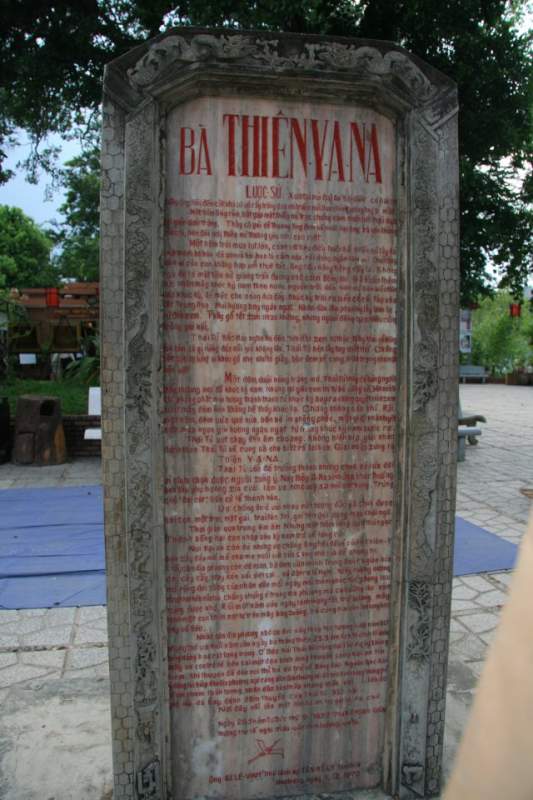
The stele records the formation of Ponagar Tower (Photo ST)
Temple Tower Area
Upon arrival, you will observe four towers that remain architecturally intact, while the other two towers have been eroded by time, leaving only the foundation.
All four towers generally share a similar design, differing only in size and the width of the interior space within each tower. Each tower features four entrances facing the East, West, South, and North directions. However, only the East-facing entrances are open to tourists for exploration. Among them, the Northeast Tower is the tallest (23m), followed by the South Tower (18m), the Northwest Tower (9m), and the Southeast Tower (7.1m). The towers are designed in an ancient style, adorned with carvings of mythical creatures and divine beings, imbuing a profound spiritual essence. Behind these towers lies the Ponagar Hot Spring, where visitors can indulge in hot and mud baths.
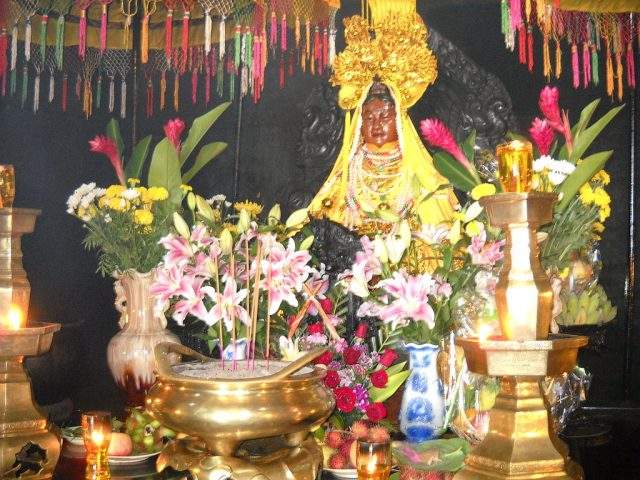
Inside the tower, worship the god Ponagar (Photo ST)
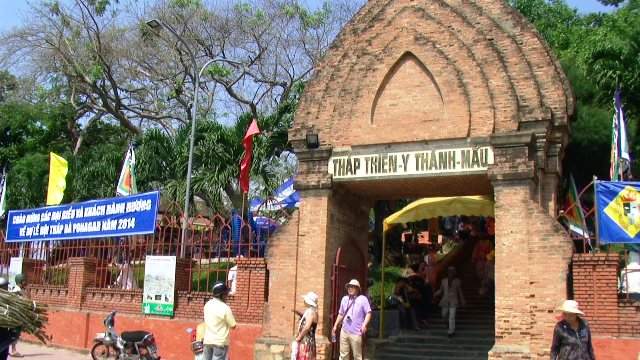
Entrance to the tower during festivals (Image ST)
Inscribed Stone Area
The inscribed stones at Ponagar Cham Tower Nha Trang hold significant cultural and historical value. In total, there are four inscribed stones housed here, each associated with a distinct and crucial milestone.
Among the four stones, the ancient Champa people erected the first one. However, in 1856, Phan Thanh Gian, a high-ranking official under the Nguyen Dynasty, converted the content of this stone into Han-Nom script.
The second inscribed stone, created in 1871, was established by eight officials from Khanh Hoa and Binh Thuan provinces to symbolize the political and cultural friendship between the two regions.
The third stone, translated into Latin script, recounts the story of Queen Po Ina Nagar and was erected in 1972.
The last inscribed stone, installed most recently in 2010, provides information about the historical site of Ponagar Cham Tower.
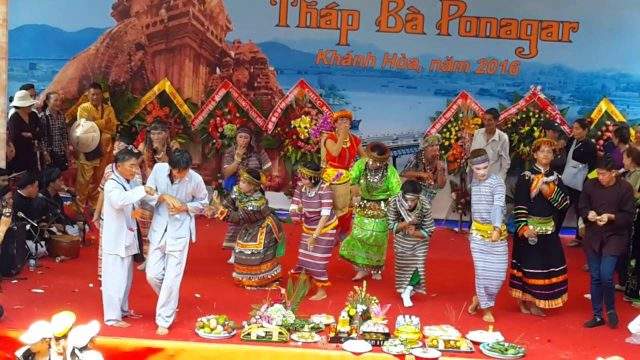
Notable performances in the festival (Photo ST)
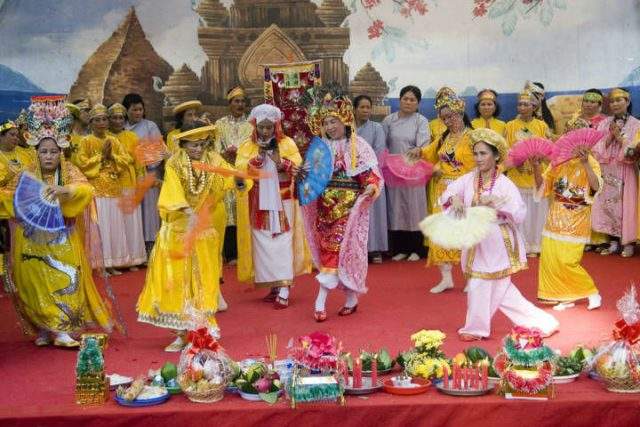
The festival is held every year in the 3rd lunar month (Photo ST)
Some Tips When Visiting Ponagar Cham Tower Nha Trang
– As this is a sacred place, a religious worship area, refrain from commenting or gestures about the goddess.
– Particularly, avoid bringing food from outside and do not litter within the premises of the historical site.
– Ensure a comfortable visit by applying sunscreen beforehand, and don’t forget to bring a hat, umbrella, and sunglasses for protection against the sun.
– Choose modest clothing if you plan to enter the temple for candle lighting and offering prayers. If you unintentionally wear inappropriate attire, you can borrow a temporary blue robe at the central tower.
– Before entering Ponagar Cham Tower Nha Trang, read and strictly adhere to all signs and instructions to be a respectful and modern tourist.
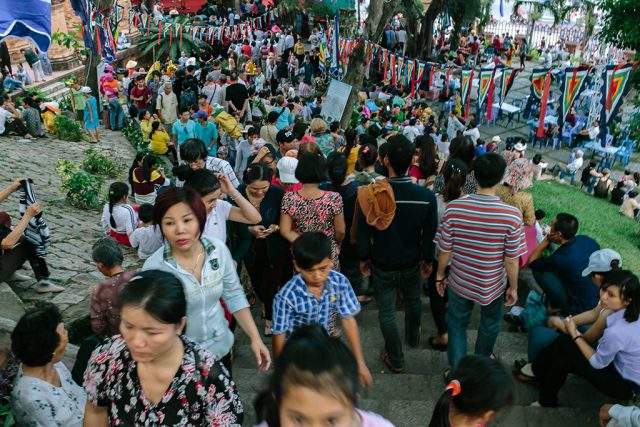
Tourists visit on very crowded holidays (Photo ST)
Ponagar Cham Tower in Nha Trang stands not only as an architectural marvel but also as a testament to the spiritual and cultural richness of the ancient Champa civilization. Each section narrates a story of worship, friendship, and the divine feminine from the grand entrance to the sacred chambers. As you ascend the steps, you’ll feel the connection with centuries past, the reverence in the air, and the intriguing tales etched into the stone. Remember to approach this sacred site respectfully, embracing its cultural significance and basking in the mystical aura that Ponagar Cham Tower graciously unfolds to its curious visitors.
